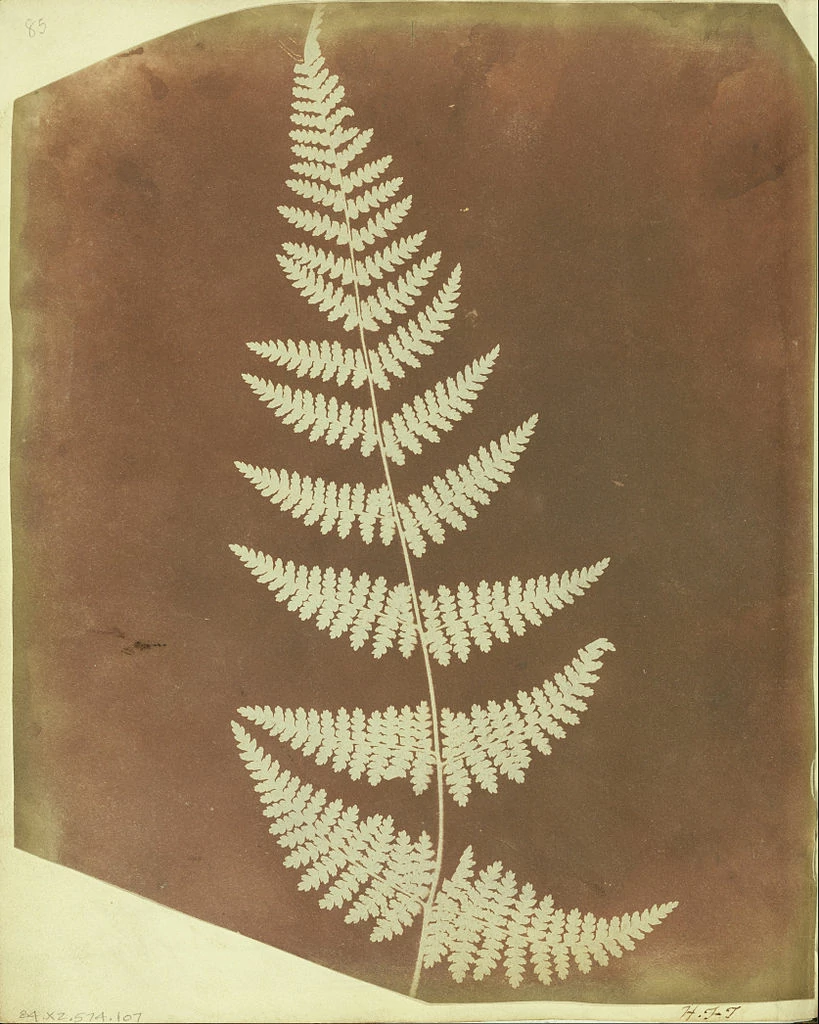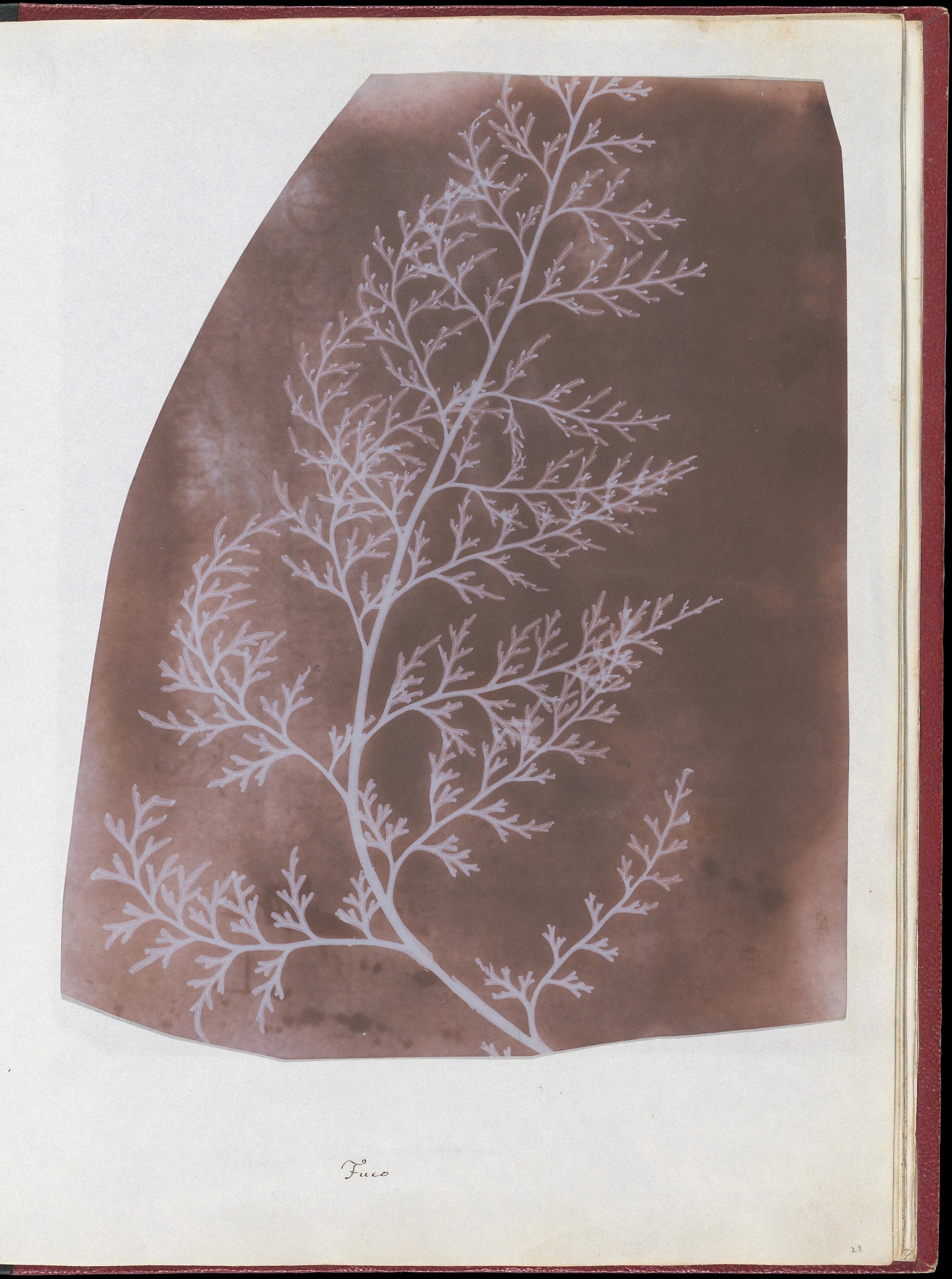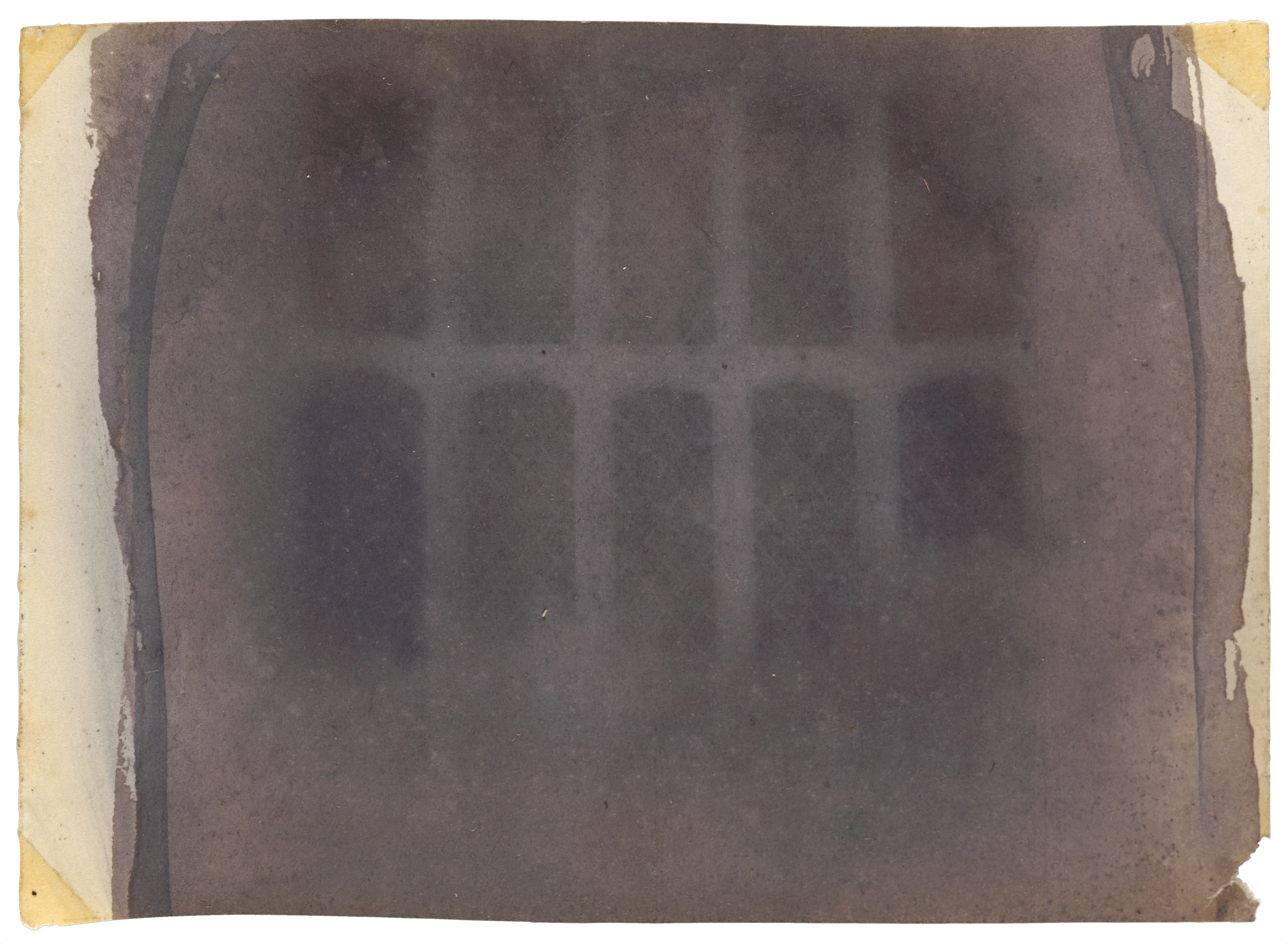The calotype is one of a handful of early photographic methods that were invented around the same time. Calotypes were sometimes called ‘talbotypes’ after their inventor, William Henry Fox Talbot, who developed the process in 1841 by coating paper with silver iodide. Though I prefer the more poetic term, from the Greek καλός (kalos), “beautiful", and τύπος (tupos), “impression.”
Calotypes take a long time to create, usually requiring an exposure of over an hour, which is probably why most calotype images are almost like still lives, more likely to feature plants or household objects than faces. After a bloom of popularity, calotypes were unable to beat out their competition, the daguerreotype, in part because Talbot copyrighted his invention and Louis Daguerre did not, allowing Daguerre’s technology to spread more quickly.




